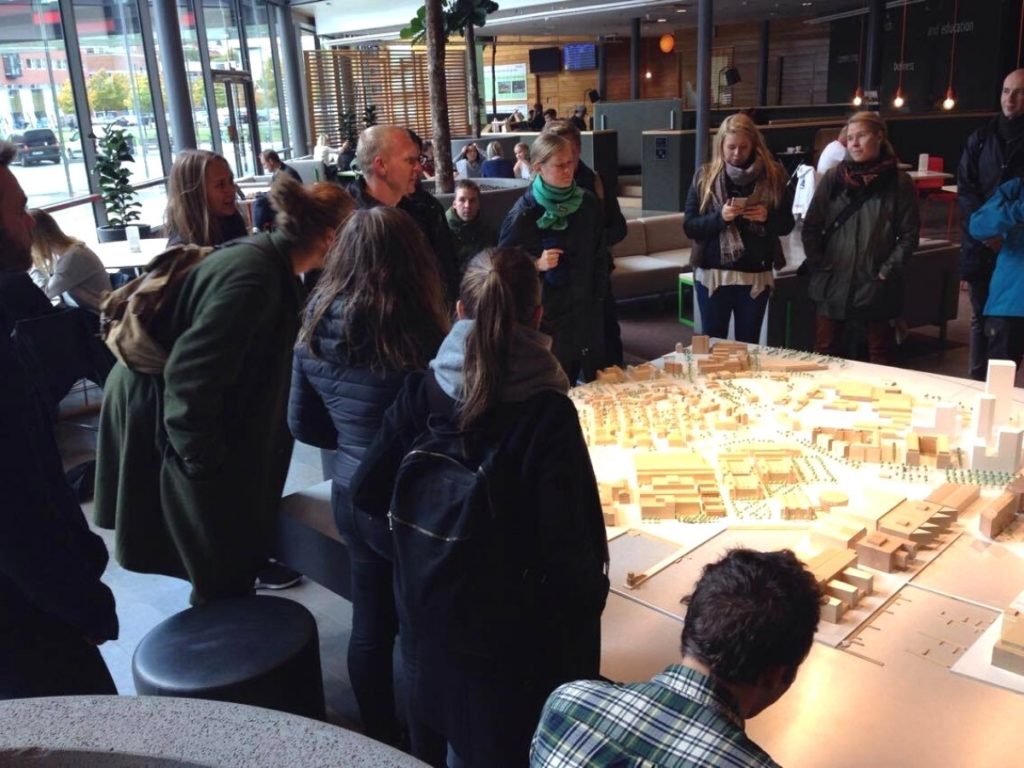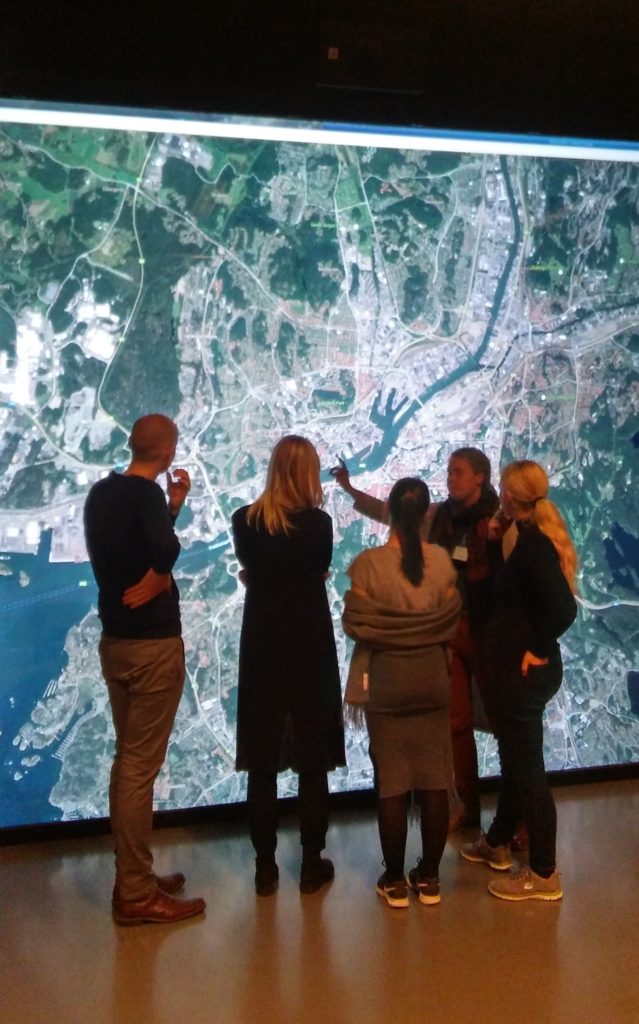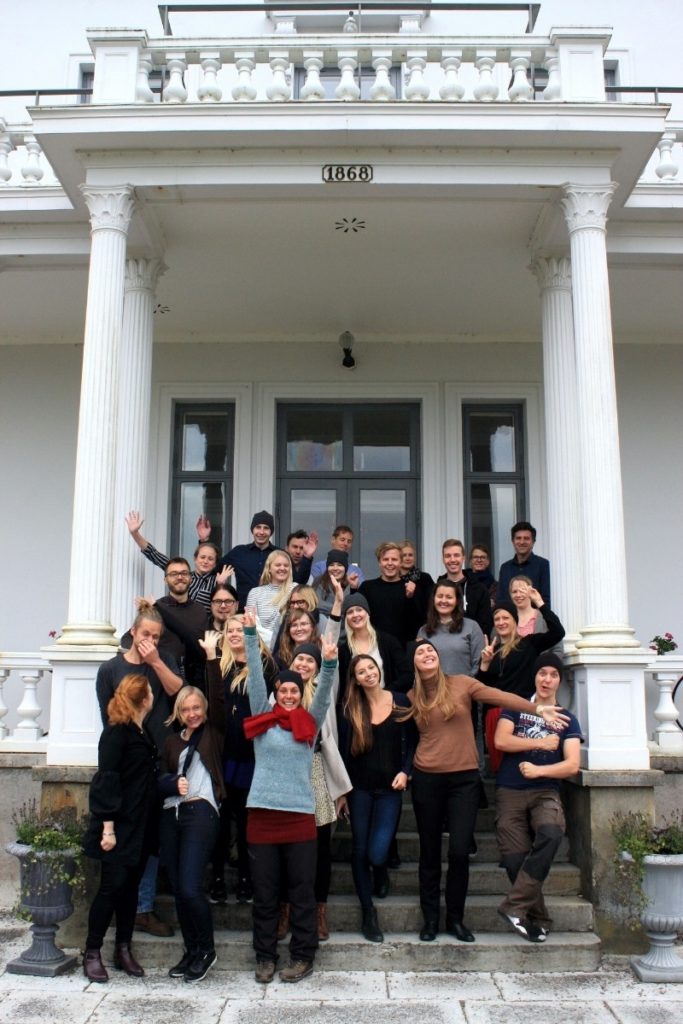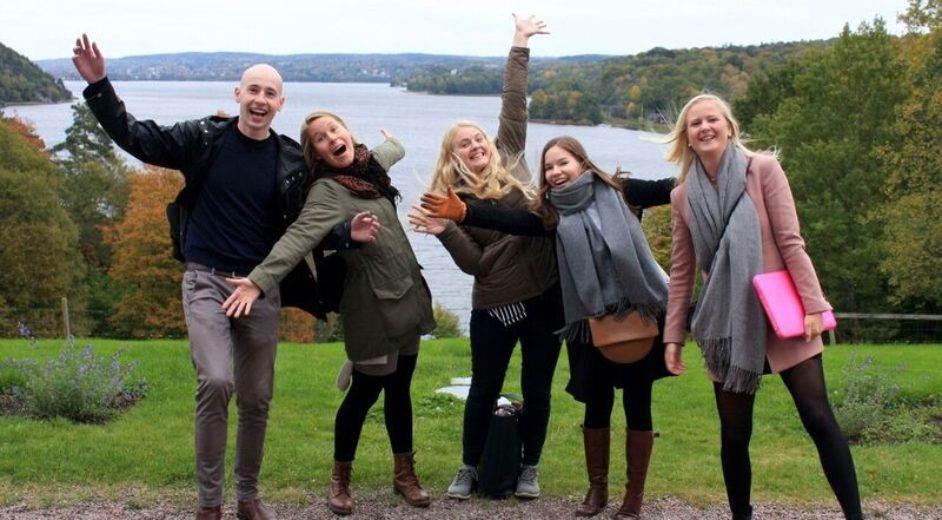They Show an Alternative Future for Sustainable Urban Development
What happens when a group of Nordic researchers and students meet with the political and administrative level in a city and have to jointly find solutions to problems and establish a sustainable city district? They cooperate – and find brand new solutions
By Joan Rask, journalist
How do the biggest Nordic seaports develop? And how do we secure that it happens in a sustainable way with focus on climate change – both in terms of the effect that we foresee, for example regarding the great rising bodies of water and changed climate conditions, and what we can do to minimise emission? That was the questions which, along with others, Jonna Similä from the Finnish-Swedish cultural organisation Hanneholmen in Helsinki asked a couple of years ago.
“A lot truly happens here in Helsinki within the area of sustainability and urban planning, but we felt that something was missing – as if the cluster here in Finland was too small,” says Jonna Similä.
The question became the beginning of a longstanding cooperation, which both seeks answers regarding sustainability and urban planning and strives to establish a network, partly between graduate and postgraduates and partly between professors and other teachers. Namely, it is no longer only Finnish interests which are in play. The partner group also includes the University of Oslo, the University of Iceland, the University of Copenhagen, the Aalto University and the University of Gothenburg.
“During my own sociology degree, I missed the international cooperation and the cooperation with other industries. On the labour market, the subjects are intertwined, and it is illogical that, as a student, you rarely take part in multidisciplinary cooperation,” Jonna Similä says.
Untapped potential
In cooperation with colleagues from Hanaholmen, the Finnish Aalto University, and the remaining Nordic partners, the project “Nordic City Challenge” was established. Their thesis was that, in the North, a lot of the structural problems are similar, the structures of society are shared, and, generally, urban planners attempt to be green and sustainable in favour of the city’s citizens and companies. This synergy they would like to utilise.

The project became a reality, Jonna Similä became project coordinator and manager, and the first full-scale project was in Gothenburg in 2016.
“I’m actually surprised by how successful it was.”
During the project in Gothenburg, she was confirmed by just how big a potential there is in Nordic cooperation on sustainable urban planning.
“We hear from a lot of people that the multidisciplinary way of thinking urban planning is new. The feedback has been that the setup of the Gothenburg project has worked really well,” she says.
Lindholmen in Gothenburg has to be rethought
The city district of Lindholmen in Gothenburg is a largely criticised industry- and city district which faces a major restructuring with the goals of better connection to the rest of the city, contemporary sustainable solutions, and a transformation so people will want to live in Lindholmen. It makes the district an ideal case. Namely, the goal is that all Nordic City Challenge projects should be city districts which are in the middle of a concrete phase of urban development, and that local partners act truthfully.

One of the project’s participants is Benjamin Breitenbauch. He is writing his dissertation for landscape architecture, which he studies at the University of Copenhagen.
“It does a lot for my motivation that it is not just another university assignment, which ends up in a pile of papers,” says Benjamin Breitenbauch.
Along with the about 20 other participants, he had to find solutions for problems which occur when coastal metropolitan cities in the North develop. It is about sustainable solutions both for the climate and for the people living there.
“We spoke a great deal about the way in which you can think about the city’s system. I could directly relate that to Copenhagen – it was very interesting to discover the connection,” he says.
Jonna Similä tells how multiple participants among both partners and students pointed to how the Lindholmen project became a form of microstate for the participants. She is sure that it is due to one special factor.
“It is invaluable that the project exists in reality. That is why we see so many opposing views in play,” she says.
Benjamin Breitenbauch experiences that both he and others have been challenged.
“I really became aware of just how hard it is to communicate outside one’s own area of expertise. It is easy to talk to a landscape architect from a different country, but there are entirely different worldviews when talking to, for example, an engineer,” says Benhamin Breitenbauch.
The Stepping Stones won
Benjamin Breitenbauch was part of team The Stepping Stones which was awarded “best project”.
“With projects, there is a great risk that one participant runs off with an idea which the other people only kind of helped with. But we have succeeded in developing a project where we got to use everyone’s creativity and expertise,” he says.
The experiences from the project have changed his view of the idea generation phase.
“It was fantastic to see the options on the table, which the engineers, for example, could provide. A broader area of expertise in the idea generation phase gave something entirely new in the process,” says Benjamin Breitenbauch.
A city district in imbalance
Associate professor at University of Gothenburg Jonas Landgren goes to Lindholmen daily. He participated in the project on behalf of the university.
“Lindholmen becomes more and more antiseptic with offices which are crowded in the day but deserted at night. There is a bad balance in the district,” he says.
Jonas Landgren was impressed by the creativity of the projects.
“It was as if the common overall message was ‘this is how it can be done’ – like they showed us alternative futures,” he says.
Jonas Landgren hopes that the project gets actual meaning for Lindholmen.
“It was very raw and a tad provocative. I think the project proposals help the decision-makers make the process more open,” says Jonas Landgren.
His personal takeaway was primarily two things:
“The most important thing was the better understanding of others’ domains and perspectives, and, at the same time, I got a clearer idea of what the different universities’ strengths and competences are at the moment – and it gave me a far stronger network,” says the professor.
One proposal was about re-creating the beautiful Swedish archipelago in the bustling lane between Lindholmen and the rest of Gothenburg. A series of activities or “stepping stones” should secure linkage and traffic between the two city districts. But it is costly because there is busy fairway in that part of the river.
“I view the proposals as small contributions in a big, complex process. Without them, I think we would be worse off as a city,” he says.

Read the article in Danish: De viser alternative fremtider for bæredygtig byudvikling
Coordinating institution
- Hanasaari - the Swedish-Finnish Cultural Centre (FI-Hanaholmen)
Partner Institutions
- Aalto University (FI) University
- University of Iceland HI (IS-HI)
- University of Copenhagen (DK)
- University of Oslo (NO-UiO)
- University of Gothenburg (SE)
Program
- Nordplus Horizontal
